CIPD Submission Guidelines
Spring 2017
2
Contents
Purpose of Guidelines 3
1. Format of Assignments 4
2. ICS Learn Cover Sheet 5
3. Word Count 7
3.1 Word Count Allocations 7
3.2 Included and Not Included in Word Count 8
Abstract/Executive Summary 9
Use of Charts/Diagrams/Graphs 9
Use of Tables 9
Headings/Sub-headings 10
Appendices 11
References 11
Bibliography 12
4. Marking Timescales 12
5. Submission Guidelines 12
6. Tutor Feedback Sheets 13
3
4
Purpose of Guidelines
For many of our students, writing academic assignments is an unfamiliar activity and even
those who have studied at further or higher education may have worked towards standards
which differ to what we would expect as you undertake your CIPD studies.
The purpose of this document is to provide students with clear guidance on submitting ICS
Learn CIPD assignments. It covers areas such as word count limit, referencing, use of
appendices and tables.
These guidelines also explore some recurring errors during the submission process, which
may result in work being returned unmarked.
If you feel that any part of these guidelines is unclear, or if you think there are other areas we
could usefully cover in this document, we would be happy to receive your feedback.
Your CIPD Tutors
ICS Learn
5
1. Format of Assignments
1.1 Report Format
If the assignment brief asks you to write a report or present your answer in a report-format,
then this is what you must do. We regret that an assignment not presented as a report, when
requested, will be returned unmarked until it is placed into a report format.
Reports include some specific additional elements such as:
1. A contents page
2. An abstract or executive summary
3. An introduction*
4. A conclusion*
5. Methodology and literature review (mainly for Level 7 assignments)
There is a webinar on report writing available in CIPD Resources on your dashboard, and we
also have an App called ‘ICS Learn Effective Report Writing’ which guides you through each
element of a report/what it includes/how to present it.
* There are some assignments where a report format is requested but the subject matter of
the assignment itself does not lend itself to an introduction or conclusion. If in doubt, please
ask your tutor
1.2 Assignments Not in Report Format
If you are not asked for a report, your assignment should not be presented as reams of
unbroken text. Your work needs to be broken down with headings and sub-headings, clearly
signposting to your tutor (and any other readers) which part of your work is to be taken as
the answer for which question/part of the question.
If a piece of work is submitted with no headings, it may be returned unmarked and you may
be asked to insert the headings.
Please note that, as well as looking professional and being far easier to read, breaking down
your work into headings and sub-headings massively helps you as you can easily identify if
there are areas of the question and/or assessment criteria that you may have inadvertently
missed out.
6
2. ICS Learn Cover Sheet
All assignments, whether formative or summative, must be accompanied by the relevant ICS
Learn Cover Sheet. Please always download the cover sheet that appears with the assignment
brief, as some assignments require different information.
Your cover sheet needs to be fully completed and must form the first page of your assignment.
It should not be submitted as a separate document. We regret that we cannot accept an
assignment for marking which is either missing the cover sheet, has the wrong cover sheet,
has information missing, or has the cover sheet attached as a separate document. This is
because the cover sheet serves two main purposes:
1. It is your declaration that the work is yours and therefore needs to be part of the work
itself
2. It provides all of the essential detail about your submission and provides a record or
paper trail of all of your submissions for that piece of work
Please ensure you have fully completed ALL the information on the cover sheet:
1. Your name – we have had several recent submissions without a student name on them
2. The Centre Name – this is ‘ICS Learn’
3. ICS Student Number – this is an 8-digit number which you will find on your dashboard
4. CIPD Membership Number – also an 8-digit number. If you are not yet a member of CIPD,
please state ‘Not yet a member’ or ‘Awaiting membership number’ or something similar
to that rather than leaving it blank
5. Qualification Title – this should be self explanatory i.e. it is what you are studying
6. Unit Title – this is the title of the module you are undertaking which appears on your
dashboard
7. Unit Code – this appears on your dashboard next to your module title e.g. 3RTO, 5DPP,
7MCR
8. Assignment Number – you will find this at the top of the assignment brief. For formative
assessments, this will simply be ‘Formative 1’, ‘Formative 2’, and so on, based on the order
in which they appear in your materials
9. First Submission Date – please take a moment to check this has been accurately
completed before submitting your assignment to your tutor, particularly if you have
worked on it then put it away for a few days before submitting it
10. Resubmission Date – if you are asked to resubmit a 2
nd time, your resubmission date must
be entered here.
11. Date you attended Live Online Classroom – for those on the online route only, this will
appear on the cover sheet for your summative assignments and must be completed. If
you have genuinely been unable to attend a live classroom and have listened to the
7
recording instead (after discussing this with your tutor), then you need to state this here.
This box will not appear on the cover sheet for formative assessments
12. Tutor who took your Online Classroom – as above, this is for the online route only and
this needs to be completed whether you attended the live class or listened to the
recording so do take note of your tutor’s name. Again, this won’t appear on the formative
assessment cover sheet
13. Date you attended Workshop – for those on the workshops route, this needs to be the
dates of your weekend workshop (where applicable)
14. Tutor who took your Workshop – for those on the workshops route, this is the name of
your tutor from the weekend (where applicable)
15. Word Count – this needs to be the actual word count for your assignment, not the
allocated word count. If only part of the assignment is word counted, this is what you
need to reflect here. If you need to resubmit, then you need to populate this box with the
word count for each submission, making it clear which word count applies to which
submission:
Word Count 1
st
– 1,398
2
nd – 1,476
If the word count does not change between submissions you still need to capture both
word counts. This could be because (a) You re-work the assignment and it still comes to
the same number of words, or (b) Task 1 is the only part of the assignment, which carries
a word count, and you’ve passed Task 1 but need to revisit Task 2. The word count for
Task 1 therefore won’t change:
Word Count 1
st – 538
2
nd – 538
Please ensure that you have included ALL of the above information on your cover sheet.
Always ask your tutor if you are unclear on what to include.
8
3. Word Count
3.1 Word Count Allocations
All the summative assignments that you complete as part of your CIPD qualification carry a
strict word count. This can range from 500 words to 3,500 words. The word count is the
number of words that CIPD believe you need to write to competently answer the question(s)
in the assignment. However, they recognise that delivering your assignment at exactly that
word count would be incredibly challenging and there is therefore a leeway available of plus
or minus 10% of that word count.
By way of illustration, here are some examples of typical assignment lengths, showing the
impact of this leeway:
Word Count 10% Leeway Minimum Words Maximum Words
500 50 450 550
1,000 100 900 1,100
1,500 150 1,350 1,650
2,500 250 2,250 2,750
3,000 300 2,700 3,300
3,500 350 3,150 3,850
On your ICS Learn Cover Sheet, you are asked to declare your word count. This needs to be
the actual word count of your assignment; not the allocated word count:
Word Count 1,398
There will be occasions where an assignment does come in exactly on word count. To prevent
any confusion, we would encourage students to add the words ‘exactly’ after their word
count, making it clear to the tutor that this is the declared word count rather than the
allocated one:
Word Count 1,500 exactly
Some assignments only carry a word count for part of the work e.g. Task 1 may have a word
count of 500 but Task 2 does not carry a word count. In this situation, you must only declare
the word count for Task 1 on your cover sheet which, in this case of a 500-word assignment,
would be between 450-550 words with the 10% +/- leeway. If a student submits a cover sheet
declaring the word count for the FULL assignment, we regret it needs to be returned
unmarked until an accurate word count within the range is declared.
Assignments that are declared over or under word count will be returned unmarked.
Assignments that are declared as being within the word count limits but are clearly over or
9
under may either be returned unmarked or may be marked but returned with a ‘Not Yet
Passed’ grade overall asking you to ensure it is resubmitted within word count.
Formative assessments (for students on the purely online route) are not as strict on word
count. Some do not carry a word count at all, although you should give a reasonable level of
detail in your answers and you should still declare your word count on your cover sheet. Some
will carry a maximum word count and some will give an approximate word count. The
plus/minus 10% rule does not apply for formatives although your tutor is unlikely to be strict
in enforcing the word count if your assignment is a few words over. It is, however, good
practice to get into working within the word count as it is strictly imposed when it comes to
the summative assignments.
3.2 Included and Not Included in Word Count
It is very important to understand the guidelines around what is and is not included in word
count, especially as this can make a massive difference as to whether your assignment is
within word count or not and therefore whether it can be accepted for marking or not.
Here is a quick summary of what is and is not included in word count, but please read on for
more detail around some of these points:
Included in Word Count Not Included in Word Count
The narrative
Academic references either presented
as quotes or paraphrasing
Tables with full sentences which
enhance your answer
Tables which are the answer
ICS Learn Cover Sheet
References Page
Bibliography
Contents Page *
Abstract/Executive Summary *
Charts/Diagrams/Graphs which enhance
your answer
Tables with very limited detail which
enhance your answer
Headings and sub headings
The actual question
Appendices
* These items are only needed if a report format is requested, as discussed earlier
10
Abstract/Executive Summary
This is only needed where an assignment must be presented in a report format, as per the
brief. It does not get included in word count. However, as you will learn from the webinar on
report writing and our App, your abstract or executive summary should not include any new
information. All your information should be in the main body of your report, included in word
count.
Use of Charts/Diagrams/Graphs
The use of charts/diagrams/graphs is acceptable as these generally will have limited written
information on them and will be used to enhance your answer with a word-counted narrative
explaining them. Some typical examples of charts/diagrams you may use during your studies
include the following, all of which would be word-count free:
CIPD HR Profession Map
Maslow’s hierarchy of needs
Kolb’s learning cycle
Covey’s time management grid
Kubler Ross change curve
Please note that you always need to explain any charts/diagrams/graphs inserted into your
assignment. Your explanation would be included in word count.
Use of Tables
Tables present a grey area because they may or may not be included in word count,
depending on the content and the purpose of them.
If you use a table to provide a brief snapshot of information, then it does not get included in
your word count as long as it meets the following guidelines:
There are no full sentences (defined as being 7 words or more)
It is no more than a quarter to a third of a page in size
It enhances your answer and the word-counted narrative above or below it provides a
more detailed explanation of the information in the table
For example, the following PESTLE analysis would NOT be included in word count providing
there is a more detailed explanation in the word-counted narrative. This is because all of the
bullet points are 6 words or fewer:
11
PESTLE Factor Issue Risk Level
Political Change in government Low
Economic High unemployment in North East England Medium
Social Ageing workforce Medium
Technological Competition from Apps High
Legal Introduction of National Living Wage High
Environmental/Ethical Pressure to reduce carbon footprint Medium
However, you might decide that you are going to present your full, detailed PESTLE analysis
as a table (instead of having a snapshot and a separate narrative), because you believe that
this is a clear and logical way of presenting the information. Even if you still have bullet points
and none of these are more than 6 words in length, you must include your table in word count
because the table is being your answer rather than enhancing your answer. Tables must not
be used as a way of getting round word count challenges.
The simple rule is: If the information in the table is your answer, it must be word-counted.
In addition to a PESTLE, other typical examples where this table v narrative situation would
apply include a stakeholder analysis, SWOT analysis, and various occasions where you need
to compare and contrast information.
Please note, however, that tables should not be over-used in any assignment. Assignments
should be written in a way that flows and, although there may be occasions where
information is effectively presented on a table, please do not use a table for several parts of
an assignment as the flow of your work will disappear.
Headings/Sub-headings
As already stated, we expect to see headings throughout all assignments, whether or not a
report format is requested. However, please do not over-use these, for example by using full
statements as a way of avoiding word count, knowing that headings are not included in word
count.
Some students copy and paste the actual questions into their assignment so they can keep
referring back to this. You do not need to do this but, if you do, this will not be included in
word count.
12
Appendices
Most assignments will not need appendices but, if you are asked for appendices, please make
sure you do include them as directed. In this case, they will not be included in word count.
An appendix cannot be used as a way of including extra information whilst avoiding
word count. You need to ensure you have answered the question in the body of your
assignment. Therefore, please think carefully as to whether you really need to include any
appendices or whether you need to re-visit the wording in your assignment to ensure it
covers the points you would have raised in your appendices.
Referencing
All students are encouraged to read journal articles via the CIPD Online Resources
section, Google Books and Google Scholar in addition to their ICS Learn Course Materials
and their eTextbook. They should then use this research to provide references in their
narrative, either in the form of direct quotes or paraphrasing.
The use of non-academic websites (e.g. Wikipedia, Business Balls, Mind Tools) will always
be discouraged.
Level 3 students are not required to reference, however, are encouraged to do so,
especially if they intend to progress with their studies. Students at levels 5 and 7 are
expected to use Harvard Referencing, which is the referencing standard that CIPD
recognise. Level 3 students do not need to adopt the Harvard style but are encouraged to do
so, especially if they intend to progress with their studies.
The references page at the back of your assignment should be presented on a fresh page
and headed up ‘References’. This is not word-counted.
The actual reference in the body of the text (whether a quote or a paraphrase) IS included in
word count. The source of this IS NOT included in word count.
For example:
Marchington and Kynighou (2012: 3336) state, “Given that the global financial crisis (GFC)
has impacted on patterns of human resource management, it is likely that this has also
shaped employee involvement and Participation (EIP).”
In this case, the words in red – Marchington and Kynighou (2012: 3336) – would NOT
be included in word count. The rest of the words ARE included in word count.
13
Bibliography
Every assignment, whether formative or summative, must include a bibliography. This
appears after your references page, on a fresh page of its own.
A bibliography is everything you have used for your research, but which you have not
referenced in your assignment.
As a minimum, we would expect the relevant module in the ICS Learn Course Materials and
your eTextbook to appear on all bibliographies, as they will have formed the starting point for
your wider research, although you may have directly referenced from your eTextbook.
4. Marking Timescales
Unless a tutor is on annual leave (and there is therefore a delay in marking), students should
usually receive feedback on their assignments within five working days and responses to
queries raised via the ‘contact your tutor’ system within two working days.
Students will be notified via the student community if a tutor is due to be on annual leave and
we kindly ask that you do not submit assignments during this time.
5. Submission Guidelines
All assignments – formative and summative – should be submitted in order and students need
to pass one before submitting the next. This is because:
Assignments often have learnings which students need to incorporate into subsequent
assignments (e.g. around word count, presentation, use of references etc.) and this
cannot be actioned if the student submits several assignments at the same time
If a student submits several at the same time and gets NYP for them all, that is a pretty
de-motivational message and a lot of re-work at the same time. We do not want to put
you in this position
Tutors expect to have a steady flow of assignment submissions. Large quantities from
one or more students result in a spike which may mean they are unable to mark all
assignments within the SLA, resulting in delays in marking
If you submit two or more assignments at the same time, you may find they are returned
unmarked and you are asked to submit one at a time.
14
6. Tutor Feedback Sheets
All assignments will be marked using a Tutor Feedback Sheet. Your tutor will comment against
the assessment criteria for that assignment, indicating which criteria are a pass and any that
have not yet passed (NYP). There is a more detailed grading system for students at level 7.
For criteria rated as a NYP, tutors will give guidance as to what you need to do in order to pass
on your next submission.
For some criteria that you have passed, you may still receive development points. These are
pointers to take on board for future assignments so please do learn from them and act on
them in future submissions.



